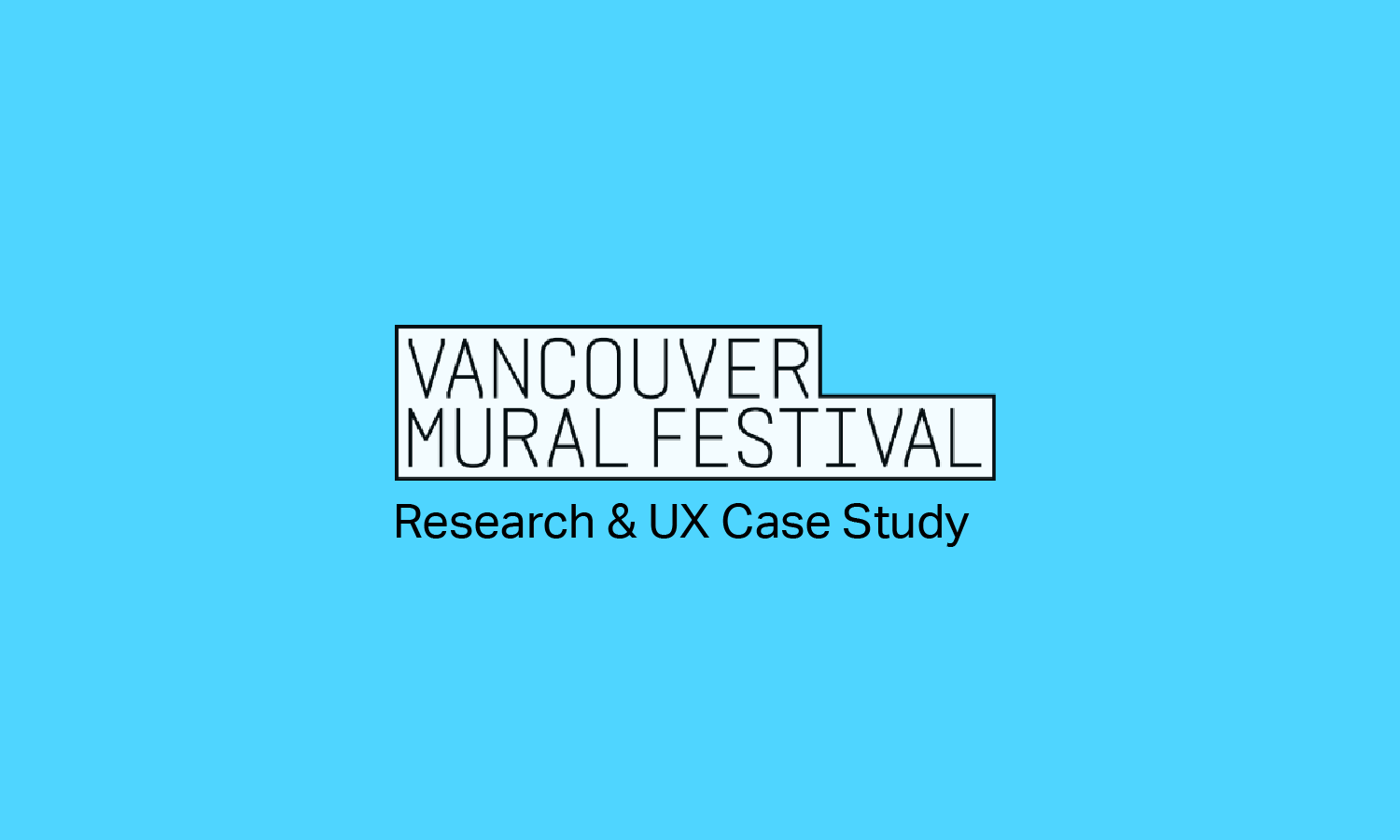
Vancouver Mural Festival
UX Research and UI Project // Summer 2018 // Final Presentation PDF
A mural literacy classroom kit—including a mural passport—that equips middle grade (grade 6 and 7) teachers with resources for art lesson planning and encourages students to engage with art inside and outside the classroom.
Design Overview
What is Mural Literacy?
Mural literacy is the ability to engage with, interpret, or understand the differences between murals, street art, graffiti, and vandalism.
Client Goal
Vancouver Mural Festival (VMF) is a local, non-profit organization founded in 2016 to fight the stigma of Vancouver as a “No-Fun City” by increasing mural literacy and street art engagement in the city.
The focus of our design project was to support VMF in improving and promoting mural literacy across Vancouver, because our research revealed a disconnect between the public’s perception of the relationship between street art and VMF vs. VMF’s perception of their own organization.
Design Opportunities
We conducted interviews with members of the VMF executive team, artists, curators, and business owners around Mount Pleasant. Through these meetings, we surfaced two key opportunities 1) the festival experience needs improvement, and 2) the walking mural tour is successful but limited by a lack of knowledgeable staff.
Quantity vs. Quality Problem
Since attendance rates are increasing rapidly, it is harder and harder to ensure all attendees are having a positive experience. Using the walking tours as inspiration, we looked for ways to simulate their success elsewhere without taking away man power from the tours themselves.
Key Research Findings
Through a co-creating workshop, we found that the coordinator's of VMF are confident in their ability to deliver an engaging experience at the festival itself for a general audience. However, their key concern was with individuals who may have difficulty engaging in the festival due to limited mobility, newcomers to BC who may have limited English, and students and younger audiences.
We also found that BC schools are always taking budget cuts, and music and arts activities are usually the first to go. Following this, we sought out collaboration and user testing with several elementary level teachers at UBC.
In consideration of VMF's long-term goal of improving and promoting mural literacy, and a need to serve edge-cases, our target audience became BC classrooms, with a specific focus on grade 6 and 7 teachers and students. This aligned with the BC Ministry of Education's recently implemented Arts Education Curriculum goal (see next image for quote).
Collaborating with the BC Ministry of Education
Getting the Design Right
Our final design for VMF is a mural literacy classroom kit that equips middle grade (grade 6 and 7) teachers with resources for art lesson planning and encourages students to engage with art inside and outside the classroom. It includes a instructional booklet, a set of activity cards, passport stamps, and 1 passport per student.
Instructional Booklet
The importance of a kit overview that highlights the value of the kit, alongside the need for detailed instructions, was brought to our attention while conducting user tests with 4 teacher candidates from UBC's education program. The instructional booklet outlines the purpose of the kit, and provides a detailed breakdowns of the contents of the kit and how to use them.
Activity Cards
These cards aid teachers in integrating art education into the classroom through guided activities, and are modelled after the BC Ministry of Education Curriculum, which includes:
A ‘Big Idea’ which is a general statement and principle that represents what students are expected to learn or understand
A detailed description of a class activity, including a set of guiding questions for teachers to ask students and prompt deeper thinking
In the first iteration of the activity cards, the teachers we interviewed identified the tone of the cards as very prescriptive and unclear. We corrected this in the final version below.
Early Prescriptive Tone
“Pair students up and get them to create a portrait that portrays who their partner is as a person.”
Corrected Descriptive Tone
“In pairs, students will be creating a portrait of their partner that reflects their impressions of each other.”
Mural Passport
The intent of the passport is to encourage engagement with art outside of the classroom by giving students a guide on where to visit VMF murals in their community. Each passport contains several entries which include:
A photo of the mural, it’s location, and the artist’s social media to establish an ongoing connection
Brief introduction of the mural or artist intent
Reflective questions about the artwork for students to complete and reflect on
A stamp or sticker area for marking your progress
Mural Page Details
The teachers appreciated the inclusion of a photo of the mural as not all students would be able to physically visit. Similar to the guiding questions done in the activity cards in classrooms, several teachers suggested we include reflective questions here to prompt students to think about, reflect, and explore their own thoughts and perceptions.
Vocabulary Index
In each entry of the passport, more complex words are underlined and can be found with definitions in the glossary located in the back. This was done to be supportive of varying educational levels as well as students who are English Language Learners (ELL).
Key Takeaways
It was fascinating to dive deep into design tools for 12 weeks. Putting our work into perspective we made:
2 in-depth journey maps detailing 60 touchpoints
Interviewed 12+ stakeholders from 3 perspectives
Created 4 possible solutions ranging from apps to physical installations
We also ensured our final analogue solution was scalable for digital use and could be transferred to VMF's existing website for a general audience. It seemed logical that if the solution was usable and beneficial for students, older audiences could also easily benefit.















